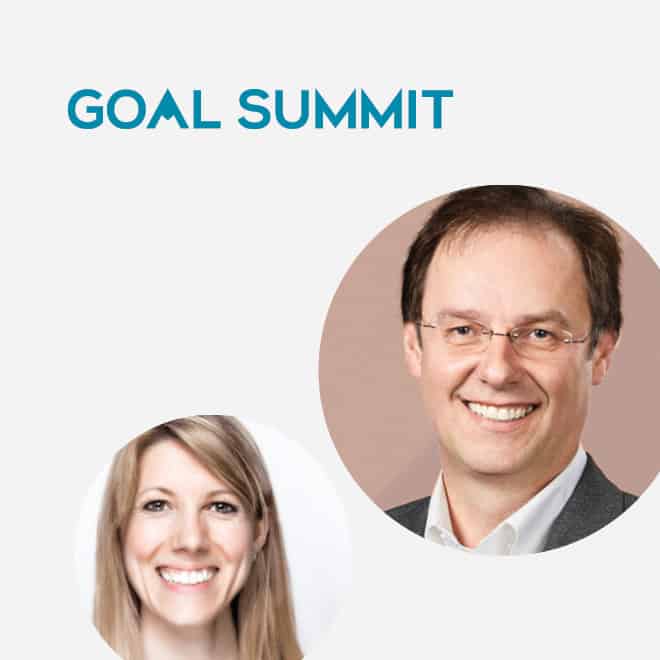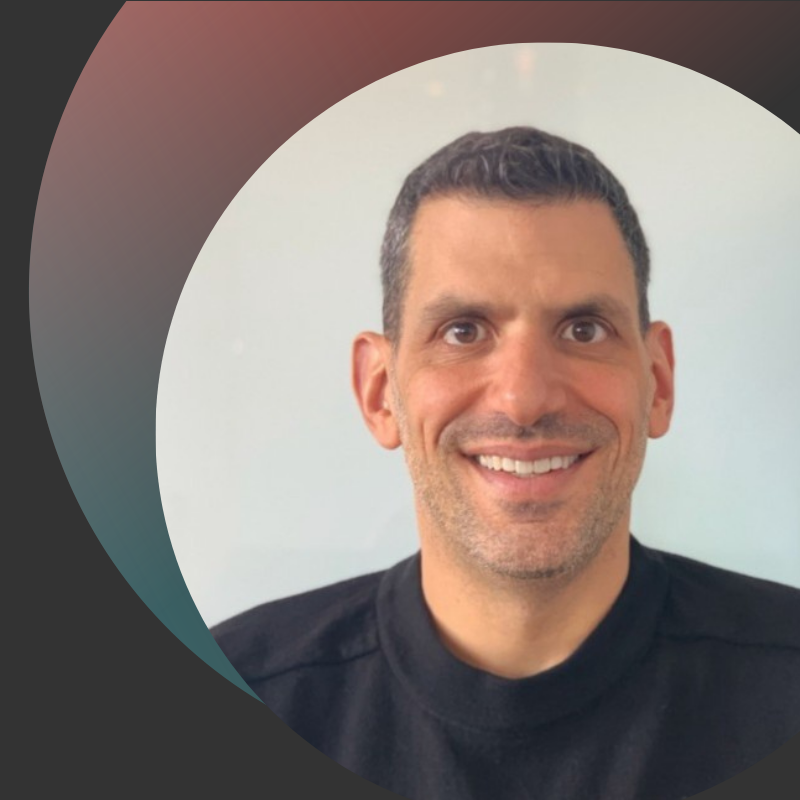“Going through a business transformation might be one of the most traumatic work events you’ll ever experience. It’s akin to putting together a 1,000-piece puzzle, only to have someone come in, flip it over and mix up the pieces. Then, they have the nerve to ask you to put it back together in a totally different way.”
Andrew Cole joined Vertiv in January 2017. He’s the CHRO and sets the company’s strategic direction for change management and talent acquisition with over 2 decades of experience with strategic transformations around the globe with teams of up to 20,000 employees. Ingrid Vidal Cullen, Senior Customer Success Manager at Betterworks, sat down with Cole to understand how he led a success business transformation and the impact of the ongoing benefits that came from this change.
Ingrid Vidal Cullen: I want to ask about the landscape at Vertiv when you joined. The company needed to make a significant transformation to become more customer-centric. What role did HR play in enabling this transformation?
Andrew Cole: I remember that two weeks after I joined the organization, a consulting company that had been hired came up to me and presented their results of a survey that had been done across the employees, prior to the acquisition. It was astonishing. The results indicated that 24 out of the 26 areas we were scoring in the lower quintile. That was the starting point.
When i think back to the culture, it was very much a fear-based culture that had been established in the organization. There were about 20 different companies that were spread across the world and 70+ legal entities. There had been a significant shift in the market in which we were operating. And as a result of it, we had to come in as HR professionals and take a look and figure out where to begin.
We started with the values of the organization and established an understanding as to what were the values we were going to operate the organization off of. One of those was respect, which is the foundation of all things we do across Vertiv. The other was transparency. One of the areas we were failing in mainly as far as the employees were concerned was the strategy and what role did their job play in executing or carrying out that strategy. The employees simply did not know that answer.
Cullen: Not having a clear sense of strategy can really create so many problems. You chose to focus on goal setting and the relationship between a manager and their team member. Why did you choose those focus areas?
Cole: Veriv was very much an engineering-out organization. As we stood at the benches in this engineering company, we believe we knew what the customer wanted. It was a “build it and they’ll but it” mentality. It was very clear that the customers were getting far better informed and they had ideas themselves as to what they wanted. So we had to become a customer-centric organization. In order to do that, you’ve got to listen. It’s very easy to say it, but when you’re growing up inside an organization and the culture tells you, “We know best and we’ve got a good brand in the marketplace,” there tends to be an element of almost being dismissive in terms of the customer.
In order for the front-facing part of the organization to be paying attention to the customer, we knew that inside of the culture of the company we had to be demonstrating that same listening skill and capability. That was a big part of the shift in order for us to become more customer-centric in how we approached the marketplace.
Cullen: When you were making this change, we decided to start with the HR and IT organizations before rolling out to the rest of the business. Why did you choose those organizations and how did that help with the change?
Cole: We decided to launch this as a pilot. We chose HR and IT because they were the two organizations or departments within the company globally that were going to touch this implementation. The conversations I was having with the leadership team I really wanted the professionals within HR and IT to not only understand the tool, because the tool is only a part of it, it’s the change management. It’s everything else around it that really makes the impact of the organization.
We implemented it with those two departments around the world first. In doing so, we discovered all kinds of things that we were able to correct from our after-action reviews. We were able to put those changes into the plan for the global launch. That pilot, by the way, lasted for almost a full year. Then, after the after-action review, we launched globally across the entire company with the learnings we’d picked up from the pilot.
Cullen: One of things I remember about the pilot that I think was smart to include was it was two global organizations. So we had input from different regions and different levels within each of those organizations. What were some of the push-backs or challenges that were coming up from the pilot. How did you course correct?
Cole: It went from everything from people saying, “Oh no, this is another tool that we have to implement” to “Why do I need to figure out a new way to write my OKRs? The way I’ve been doing it for years has worked just fine,” to “Why do I need to sit down quarterly with my employees? I sit down with them once a year and I can barely do that. Now you’re asking me to do it quarterly? Have you lost your mind!”
There was a laundry list of excuses and reasons as to why we should not move forward with implementing it. But I still go back that the conversation was never going to be about HR forcing this on the business. THe mentality always with the CEO, and by the way, the CEO had to buy in at the very outset because if the CEO doesn’t buy in, it’s not going to work. If you look at it from the standpoint of how we implemented the OKRs and the buy-in to the quarterly conversations, it was all about the CEO doing it with his executives and the executive teams doing it with their direct reports. Once they started to see the value happening, then they got completely bought-in to this is the direction we need to go in.
Cullen: Thinking about the success of the pilot and then the broader roll-out, communication was so key. I remember you saying, “If you’re not sick of hearing me say it, I haven’t said it enough.” I think that’s so true. I’d love to hear about your approach to communication at Vertiv. What went well? What didn’t work?
Cole: We are now an organization that firmly believes that any time you introduce something new into the company, employees have to hear it seven different times before they begin to realize you’re serious about it. When we started out, we knew that at least the first 4-5 times was going to be noise.
We worked out different strategies on how we were going to communicate. So we would do it in an email, which is the lowest of the low in terms of effectiveness, but then we had the CEO talk about it at one of his quarterly communications. I ended up speaking directly at a global town hall meeting. We then had every single executive bring it up in conversations with their direct reports. We ended up requiring there to be focus group discussions around the benefits and drawbacks, in order to make this a discussion.
Bottom line is it started to appear everywhere in the organization that this was the direction we were heading in. One last piece we built into the conversation all along—this was going to be about the way in which Vertiv would do business going forward. In order for us to close the gap, and we were very transparent about how dismal our scores were and I would talk about them all the time, myself and the leaders made sure we had a process and a system by which we communicate from the strategy all the way down to the actionable items every employee in the company has got to execute.
Cullen: Something I think you did super well is create your own branding around this program. Right from the beginning, the Vertiv team came up with this concept or brand called, “Elevate.” It was all about elevating your talent and elevating your performance. It was tied into a lot of other initiatives that Vertiv was doing around making these more customer-centric changes. What we saw was a shift in the conversation from, “We have to do OKRs with Betterworks. We have to do this new tool,” to, “This is our Elevate program. You happen to use Betterworks, but it’s not about the technology, it’s about the process and something authentic and relevant to Vertiv.”
Cole: Absolutely right. The Elevate program is depicted in a wheel. It starts from the moment an employee comes into the organization and goes the entire way around to the exit interview. Throughout all of that, it’s about the development, enhancement, encouragement, and respect of the employee and their entire engagement in the organization.
Fundamentally, if you dont bring the organization along the journey and the executives spend time locked away in a conference room and they make the journey and expect to just drop it into the employee base—that’s not the way it works. The employees have to be fully engaged in the journey and understand how and why they’re doing the OKRs and how it’s going to elevate the talent across the organization.
Cullen: How do you convince leaders to change their mindset around OKRs just being linked to compensation, rewards, and reviews?
Cole: The first requirement to be a manager is that you actually have to care about your people. I know that may be a novel idea, but it’s just really important. When you have that, everything that you approach from there on in is about the individual. How do you improve their performance? How do you improve their understanding and become more of what they are today? That was core to actions we were taking.
I would also say that when you look across the utilization of the tool when the CEO and the executive team actually started to have the conversations every day and week around OKRs and they were using the language and the system, it made a huge difference in the adoption rate across the organization.
Cullen: We focused on the OKR side of the program, but something else you put focus on is the conversations, feedback, and quarterly review process. From the beginning you overhauled what Vertiv was doing for performance management. Can you touch on what was the old way and what have you done since you rolled out this new approach?
Cole: For years, I have said that the old traditional performance review of the meeting at the end of the year was neither benefitting the employee or the organization. We had the opportunity within Vertiv to move that process to one side fairly quickly. We introduced a quarterly conversation. We made it very simple: the employee gets to ask the manager three questions. What do you want me to start, stop, and continue? And the manager gets to ask the same three questions of the employee.
he first quarter, I will tell you the managers complained about a quarterly basis versus yearly. It moved from all court conversations in the first quarter to feedback from both the manager and the employees that had become more comfortable in the third quarter. By the fourth quarter, you had employees nudging the managers to ask for the quarterly conversation to be put on the calendar.
I firmly believe it was the foundation that allowed this to happen. It was the foundation of the development of a new understanding of trust in the company. We came from a fear-based culture and now we have a situation where employees and managers were sitting down and seeing each other for who they were. And not doing in a judgemental format, which the traditional performance review process almost always ended up setting up.
To learn more about how Andrew Cole helped transform Vertiv into a customer-first and employee-centric organization, you can access a free recording of his interview here.







